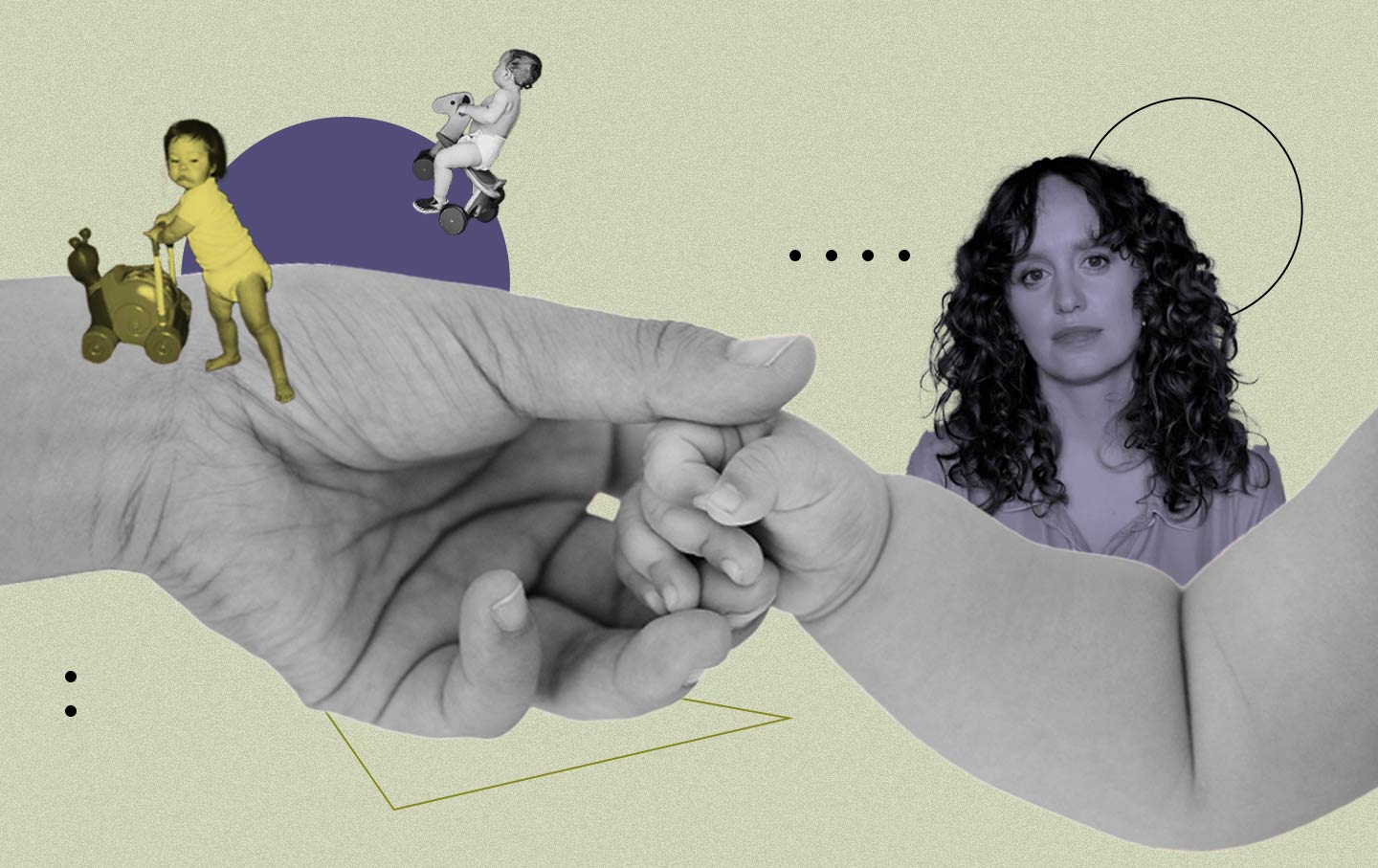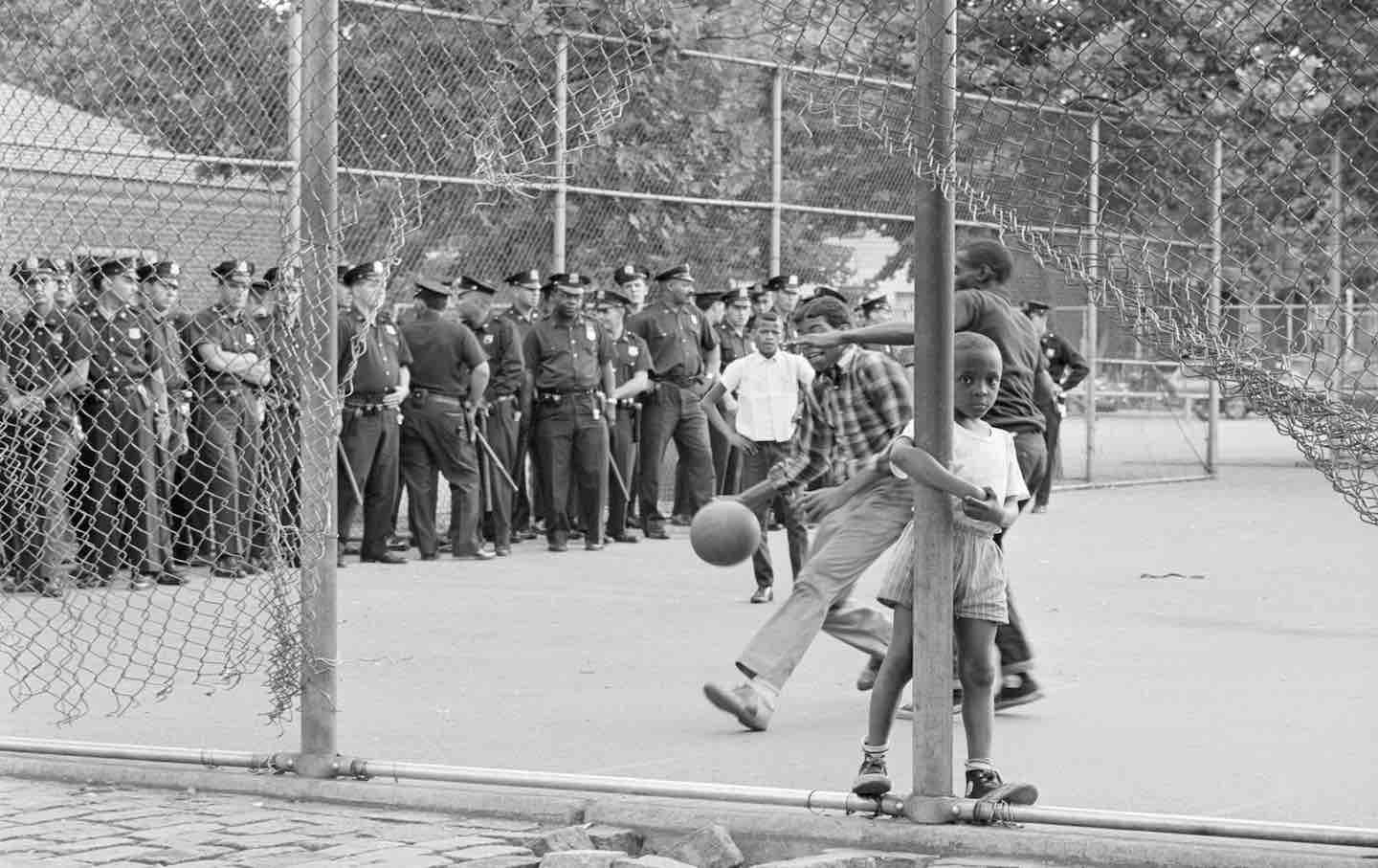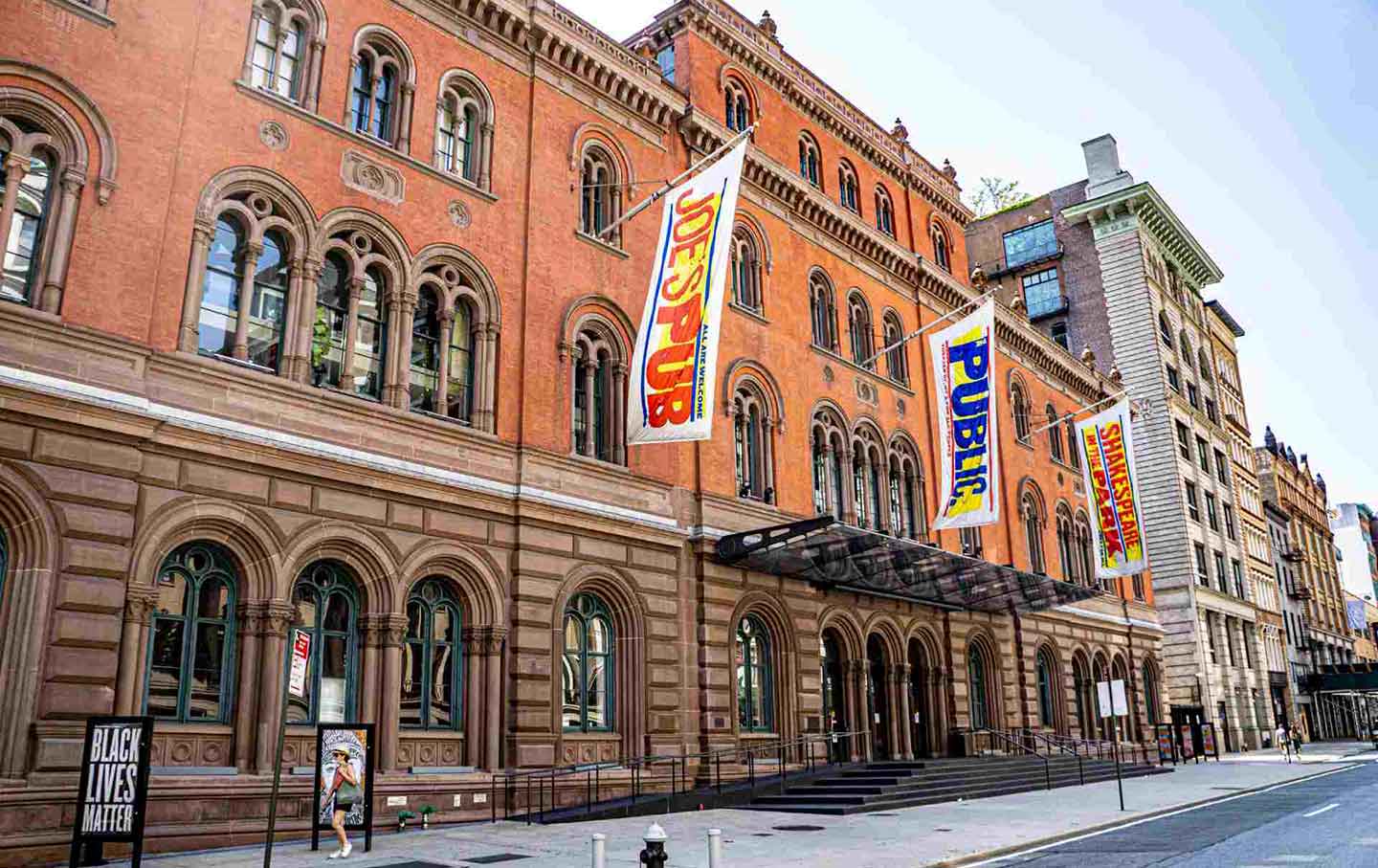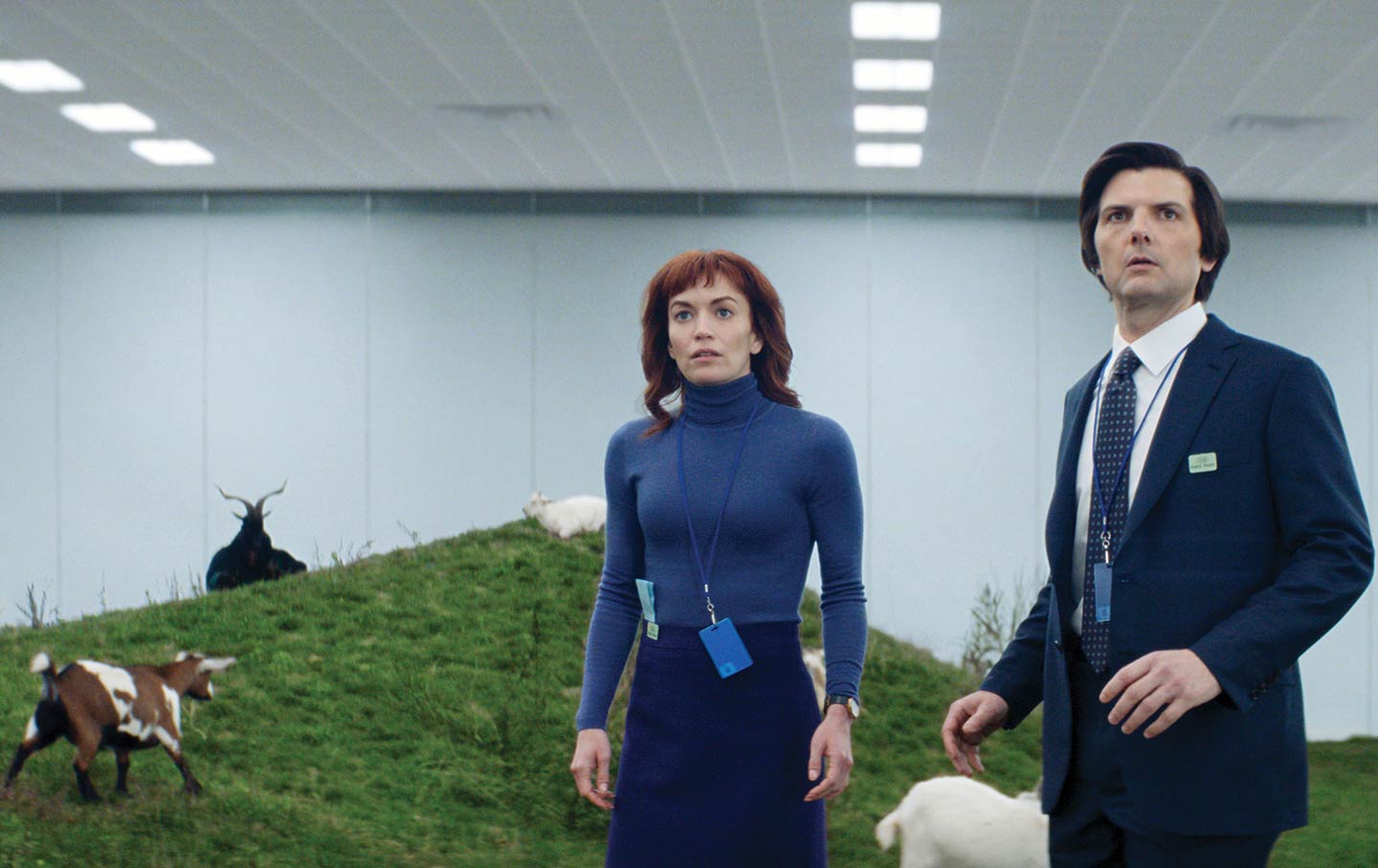The Anger and the Resolve
Olga Ravn’s novel of parenting and its discontents.
Olga Ravn’s Novel of Parenting and Its Discontents
In My Work, the novelist examines the trials and tribulations of being a mother.

In 1947, the English pediatrician Donald Winnicott listed the reasons why it might be natural for a mother to hate her baby. His intention was to challenge the inherited idea that mothers spontaneously take to their children and, in this way, ensure that women felt less alone in their postpartum anxiety. The baby “is ruthless,” Winnicott wrote, and “treats her as scum, an unpaid servant, a slave…. He is suspicious, refuses her good food, and makes her doubt herself.”
The ambivalence that a mother might bear toward her child sits at the center of Olga Ravn’s new novel, My Work. In it, we meet Anna, who documents the dislocation and isolation that she experiences upon giving birth and raising a young child. In diary entry after diary entry, Anna meticulously records her sense of detachment from the child, “the anger and resolve,” Ravn writes, “that hid on the other side of the child’s cries.” In this way, Ravn’s novel brings into articulation the unformed and semi-formed thoughts that lie on the outer edge of the stories that are conventionally told about motherhood.
Translated by Sophia Hersi Smith and Jennifer Russell, My Work, which is based on Ravn’s own experience of motherhood, is a cross between various genres—at once a work of autofiction and theater, poetry and essay, memoir and correspondence. The novel shares with other recent experimental works of fiction—novels like Kate Briggs’s The Long Form and Lucy Ellmann’s Ducks, Newburyport—a desire to reimagine social relations from a mother’s point of view.
Set in Denmark and Sweden, My Work follows Anna’s story across two pregnancies. The plot is minimal: Anna has few interactions with anyone other than her child; the focus of the novel is almost entirely on the psychic drama of maternal alienation. Like the author, Anna is a freelance Danish writer; she lives with her partner, Aksel, a Swedish playwright. Although he is not altogether absent, Aksel seems so far away from Anna as to be a character in a fairy tale. Anna herself is very much present, but she also experiences various degrees of estrangement from the world after the onset of motherhood. Caught between the advice of the Danish Health Authority, the Swedish National Food Agency, and Aksel’s belief about what is best for a child, Anna struggles to tune in to her own inner voice.
The diary format—which has been used as a subversive device by feminist writers over the years—provides Ravn with a space to record Anna’s increasingly profound detachment, the daily labor of housework, and the way that mothering pushes her toward a state of madness. Though we catch glimpses at times of Anna reveling in minor domestic labors such as folding the linen, where the language is soft, elastic, and a little mawkish, at other times we find her jotting poems about “onesies / matte plastic bottles / greasy pillows” and the “rage” about maternity leave that “destroys” her.
Anna’s diary in My Work also introduces her as a character, since she is not the novel’s narrator, whose identity remains largely cryptic throughout. The narrator tells us only that rearranging the order of Anna’s journal “was a way of mimicking” her own experience. And since Anna also reflects on her process of composition, it can be hard to tell the two apart. The narrator is a person not unlike Anna or Ravn, for that matter, but she remains unnamed and mysterious. In selecting and rearranging the various entries in Anna’s account of her pregnancy, the narrator’s intention is to preserve a record of the emotional and physical experiences of motherhood that are easily repressed or forgotten, in part because of the shame that surrounds maternal discontent and continues to make it a little unspeakable.
“When the boy won’t stop crying,” Anna writes toward the end of the novel, “I tell myself that he is not my child, just a boy in my custody. Otherwise I go into a kind of trance; sweat pricks at my skin and while I alternate between comforting and scolding him, all I can think is what have I done wrong as a mother, what is he trying to tell me with his outburst, and these thoughts lead me directly to a feeling of narcissism in which everything the child does is a reflection of me.”
My Work grapples with this discontent from various angles. The book is interested in the feminist tradition of the 1970s Wages for Housework campaign and in thinking of motherhood and household labor as work. Anna seems less enraged, however, by the realization that motherhood is work than by the fact that it prevents her from writing (a common thread in novels written by middle-class white women on motherhood, as the New Yorker critic Parul Sehgal has observed).
The diary that Anna keeps—which spans the years 2015 to 2017— is an archive from which the narrator subsequently constructs a fragmentary story of the maternal inner world, which is then processed from a distance and through the lens of society and history. It records snippets of Anna’s personal reflections, interlaced with news and political events. “Do I understand all major life events primarily through shopping?” Anna reflects in late 2015. In November 2017, she notes a headline: “CHILDLESS COUPLE BOUGHT NEWBORN BOY FOR 5,500 KRONER IN POLAND,” as reported on DR.dk. Her journal is designed to create a sense that the present moment, in which apocalyptic events routinely unfold and reproduction is bound up, as it always has been, with networks of capital, is not particularly conducive for bringing a person into the world—a sentiment shared in liberal publications since the mid-2010s.
This wider anxiety is shown to bear on Anna’s own postpartum anxiety. Splinters of her inner world are enmeshed within wider reflections on the organization of social life and labor. “When Marx wrote that work should be outsourced to machines so the worker could instead write poetry in the morning,” Anna reflects midway through the novel, “who did he imagine changed the diapers?” By following two years of Anna’s life, we get to see who does change the diapers, as well as to read the fragmentary, occasional poetry that she writes in the stolen moments between her constant maternal shifts.
Ravn, who has been hailed as one of the most innovative writers on Copenhagen’s literary scene, has long been interested in the politics of labor. The daughter of a well-known Danish pop singer, she cofounded the feminist performance group and creative-writing school Hekseskolen in 2015. Her second novel, The Employees, was nominated for the International Booker Prize in 2020 and was her first to be translated into English. The Employees is composed of a series of reports and memos from crew members aboard an intergalactic spaceship bemoaning their daily grind. Like My Work, it is concerned with the psychology of the self under the pressure of labor, but it takes quite a different stylistic and generic approach to such questions. A workplace novel launched into outer space, The Employees is infinitely strange and subtly revelatory as it imagines the human from the lens of the nonhuman, taking us to the edge of what we know about ourselves.
While influenced by Danish writing—including the working-class author Tove Ditlevsen, whose work Ravn helped introduce to a new audience—her writing also shares certain qualities with the English author Anna Kavan, whose work is known for its intense, stripped-down psychic landscapes, in which the characters seem so isolated as to be removed from the world entirely. Kavan’s stories take place in an icy, indeterminate terrain that tends to be understood in terms of the enclosure of the narrator’s psyche. Ravn’s writing is located in a more identifiable contemporary Scandinavian setting, in which the characters buy overpriced lattes and set their sights on affording a mortgage one day. But unlike Kavan’s fiction, in which reality, under the force of alienation, has the texture of a decadent dream, My Work hovers between this banal, everyday reality—which has the cushioned minimalism of Scandinavian architecture—and the otherworldly and isolating landscapes of the maternal imagination.
This landscape can often feel hazy and difficult to navigate. For much of the novel, we dwell in the inner world of Anna’s psyche, but when the narrator takes over, Anna’s plight is presented to us with a sense of clinical detachment. In these parts, we see Anna through the lens of medical practitioners, psychotherapists, and nurses as a patient, or simply as a number on a chart. Group-therapy dialogue and case studies are included in the novel alongside Anna’s poetic musings on the daily labor of mothering. We sense the opposition between these two modes most forcefully in the deadpan humor of the book’s opening sections, in which the narrator maintains a willful skepticism toward the institutions of maternal care. “When she thought about it,” Anna muses, “all her problems could be traced back to that bitch at the childbirth class…. It was the most heterosexual space she had ever been in.”
There are moments in the novel when this aggressive, wily voice breaks through, and at times it reaches a fever pitch, as when Anna thinks of herself as “a bowl of blood, still in the delivery room,” and contemplates whether it makes sense to “speak with one voice” when motherhood produces a different self entirely. At another point, Anna thinks of herself as “a 29-year-old state-owned milkmaid,” as if she’s been stripped of agency entirely and, as in dystopian fiction, has become nothing more than a vessel of reproduction.
Ravn’s novel wants to show us not only that motherhood is work but also that Anna’s failure to see it as work is related to her experience of postpartum depression and her growing sense of desolation. Maternal depression, articulated as a turning inside-out of Anna’s self, is not—or not simply—a biological state but rather a product of the limitations of our existing ways of thinking about parenting. The source of Anna’s discontent is rooted in the specter of the idealized mother, which seems to remain an immovable icon in the social imagination.
Since the 1970s, feminist artists and writers have experimented with forms that mirror the interrupted, and often spasmodic, temporality of mothering. A book or artwork presented in fragments or in a series lends itself to the short bursts of time that mothers have to read and produce art and literature. Artists and writers like Mary Kelly, Susan Hiller, and Bernadette Mayer have used the journal form to record the internal and external changes they experienced during their pregnancies. By mapping out those nine months, they introduced a new kind of realism to the experience of motherhood; the ordinariness of their descriptions cuts sharply against the sentimentality that is often associated with the subject.
Ravn works within this tradition, but she also wants to show that pregnancy is not only less linear than the chronological structure of a novel but also does not map neatly onto a nine-month period. Defying the conventions of plot, My Work has 13 beginnings, 28 continuations, and nine endings. In this circuitous way, Ravn shows how maternity is a prolonged, uncertain, and spellbindingly repetitive state. At the end of the novel, we find Anna about to give birth for the second time, creating the impression that everything that has already happened in the novel may begin again.
At stake in this formless or disordered narrative is also the question of literary value. Motherhood, Anna reflects, compels her to reevaluate what she once took for “good” and “bad” art. Both Anna and the narrator see their narrative experiments as refusing these terms. The book, as if to illustrate this principle, includes poetic jottings that would ordinarily be seen as requiring some editorial attention.
Fragmentary or circuitous narratives that are composed of random events and emotions compiled into a sequence are required to be interesting. Yet it is in the details—rather than in the overall conception—that My Work fails to hold the reader’s attention. Observations accumulate, but rarely do they strike the reader with a punctuated sense of clarity. And for all the repeated chronicling of Anna’s feelings, the novel builds little emotional weight. Even when the narrator tells her story from outside Anna’s own subjectivity, it is still heavily circumscribed by Anna’s world and experiences, which seem almost interchangeable with the narrator’s own. As a result, reading My Work can often be a frustrating experience—a frustration that becomes more pronounced because of the way that some of the novel’s imperfections are couched as experiments and its flatness passed off as depth.
Popular
“swipe left below to view more authors”Swipe →The problem here seems partly a question of genre. On the one hand, autofiction encourages certain kinds of experimentation, but those experiments often feel strangely familiar—and easily reproducible—rather than risky. On the other hand, the problem here also has to do with the vagueness of the relation between the author, the narrator, and the protagonist. If autofiction elevates the minute and often mind-numbing details of everyday life to subjects worthy of novelistic attention, it nevertheless requires a rueful and sometimes remorseless distance from the self to be successful, allowing those observations to be delivered with utter control. It is this distance that is lacking in My Work.
By the end of the novel, one gets the sense that Ravn feels the same way too, for in its concluding sections she has her narrator cast off Anna altogether. Anna, it seems, has outlived her fictional usefulness, and now we hear from the narrator (and, one suspects, from the author) more directly. “I can no longer write in the third person,” Ravn’s narrator tells us as the book moves toward its close. “Writing in the third person was born of a powerlessness in the face of experience.” As a narrative device, Anna has helped Ravn reveal the splintering selves that maternity induces, but by the end of the book, even the narrator’s identity—and the novel itself—seems to be unraveling.
Ravn explained in an interview that she chose the title My Work to expand the territory of what is traditionally considered labor, as well as to lend the novel an air of “authority…in a teasing way”—teasing since books on motherhood are often considered less impressive and valuable than, say, books on war. Autofiction is concerned simultaneously with the way the self and the book are produced, and so it becomes a perfect medium for thinking about the challenges of combining the questions of how to create and how to parent. But autofiction is also a solipsistic genre, and for a novel that is ostensibly about work, My Work can give the impression, through its intensely inward focus, that motherhood is a workplace of one—a strange position to hold for someone invested in the politics of labor.
My Work wrestles with the “microscopic rapture” of this intensely private vision of motherhood—and with the idea that motherhood is a secret territory known only to mothers and pregnant people. But it never entirely gives up its solipsism long enough to reflect on its own investment in a genre—autofiction—that the critic Frank Guan once referred to as an aesthetic form of careerism, or to consider what motherhood might look like for someone other than Anna and her narrator. We are left with a vision of motherhood as a monotonous individual dream from which Anna yearns to awaken. But it would, at least, have been interesting to see what happens when someone else begins to change the diapers.
Support independent journalism that exposes oligarchs and profiteers
Donald Trump’s cruel and chaotic second term is just getting started. In his first month back in office, Trump and his lackey Elon Musk (or is it the other way around?) have proven that nothing is safe from sacrifice at the altar of unchecked power and riches.
Only robust independent journalism can cut through the noise and offer clear-eyed reporting and analysis based on principle and conscience. That’s what The Nation has done for 160 years and that’s what we’re doing now.
Our independent journalism doesn’t allow injustice to go unnoticed or unchallenged—nor will we abandon hope for a better world. Our writers, editors, and fact-checkers are working relentlessly to keep you informed and empowered when so much of the media fails to do so out of credulity, fear, or fealty.
The Nation has seen unprecedented times before. We draw strength and guidance from our history of principled progressive journalism in times of crisis, and we are committed to continuing this legacy today.
We’re aiming to raise $25,000 during our Spring Fundraising Campaign to ensure that we have the resources to expose the oligarchs and profiteers attempting to loot our republic. Stand for bold independent journalism and donate to support The Nation today.
Onward,
Katrina vanden Heuvel
Editorial Director and Publisher, The Nation
More from The Nation

How White-Collar Criminals Plundered a Brooklyn Neighborhood How White-Collar Criminals Plundered a Brooklyn Neighborhood
Stacy Horn’s Killing Fields documents how East New York was ransacked by the real estate industry and abandoned by the city in the process.

When They Came for Columbia University When They Came for Columbia University
The university has become the Trump administration’s test case for the largest assault on higher education since the McCarthy era. Sadly, it has notably failed to defend itself.

Trump Took Over the Kennedy Center, but Silencing the Arts Will Not Be So Easy Trump Took Over the Kennedy Center, but Silencing the Arts Will Not Be So Easy
Our last best hope for sharing, shaping, and wrangling over independent ideas may turn out to be America’s scrappy and disparate arts spaces—if they can hang on financially.

The Workplace Nightmares of “Severance” The Workplace Nightmares of “Severance”
The appeal of the Apple TV+ series is how it dramatizes our alienation from labor.

How Atlanta Became a Walkable City How Atlanta Became a Walkable City
The Beltline and Georgia's experiment in pedestrian spaces.

Why “The Living Mountain” Endures Why “The Living Mountain” Endures
Nan Shepard’s classic of nature writing and memoir is an education in how to reorient one's attention to a landscape and its lifeforms, human and nonhuman.


